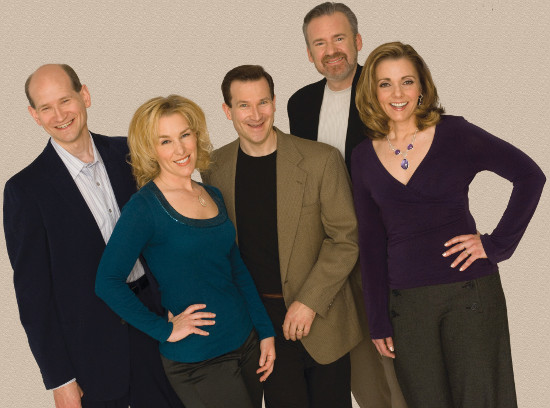
We do silly things for love. This must be one of them.
In what Music Director and Conductor Mark Russell Smith termed a "fun experiment" at his February 7 "Inside the Music" lecture, the Quad City Symphony, for its "Valentine's Day" Masterworks concerts, replaced classical-music repertoire for half of the program with tunes from the 1940s sung by a five-member swing group. Last year, we got Scheherazade; this year, we got the "Boogie Woogie Bugle Boy."
The orchestra was the opening act, performing Berlioz's arrangement of Carl Maria von Weber's Invitation to the Dance, Leonard Bernstein's Symphonic Dances from West Side Story, and Tchaikovsky's "Waltz" from Swan Lake. During the second half, the orchestra served as backup band for vocal group Five by Design, which performed a variety of old-time pop selections including, among others, "Night & Day," "Begin the Beguine," "The Trolley Song," "Mairzy Doats," and "Sing, Sing, Sing."
I enjoy all kinds of music, and symphony orchestras have long attempted to attract new audiences by blending popular and classical music in their Pops concerts. Simply put, the swing music on the February program belonged in a Pops concert, and it diminished the Quad City Symphony's Masterworks series - whose traditional forms and repertoire are my balms against the temporal superficiality of what Mahler called "a garish world."
The musical mismatch in conception was exacerbated in the February 9 Adler Theatre concert by the artistic disparity between the orchestra and vocal group, both in technical execution and ability to evoke an emotional response. Even judged only in its genre, Five by Design could not match the performance standard of the orchestra.










